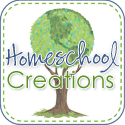The single most important thing you can do to successfully grow a reader is to read to them. After that, read to them some more! My goal was always to read to my toddlers at least a dozen books a day. Along with all of the reading skills you are teaching, make sure you are taking lots of time every day to read.
An important component of the Balanced Literacy approach is Shared Reading. You do not need to be thinking about shared reading every time you read to your child, most of your reading should be free flowing, just you and your child/children sitting down to enjoy a good book. Here we will talk about teaching reading skills through shared reading, and choosing some books (one book a month, for example) to extend with some literature based activities.
You are already familiar with reading aloud to your child, so here's a little more information on what shared reading is (you may find you already do a lot of this with your child):
- During shared reading the parent models and explicitly teaches the process, strategies, concepts, and mechanics of reading.
- The child joins the parent in reading and re-reading a specific text.
- Shared reading allows children to absorb what they need to know about reading without having to read independently
 |
| Some favorite classic children's literature |
Good readers:
- Have a purpose for reading
- Think about what they already know
- Make sure they understand what they read
- Look at the picture when possible
- Predict what will happen next
- Form pictures in their minds
- Draw conclusions about what they read
- Try to figure out new words
How do you model and teach these skills?
Before reading:
- Talk about the title and the picture on the cover.
- Take a "picture walk". Look through the pictures and talk about what is happening in the pictures.
- What do you think this book is about?
- Have you ever (picked blueberries, lost a mitten, wanted a toy)?
- Who do you think will be in this book? What characters will be in the book (introduce that vocabulary)?
While you are reading:
- What do you think will happen next?
- (After reading on) Were you right? (Remember, it is not important if your prediction is wrong or right, just that you made the prediction. Great books are full of surprises that you didn't expect!)
- Show them features of print, punctuation (I know he was excited when he said that because there is an exclamation point at the end of the sentence, see it here, the line with the dot at the bottom).
- Ask them to predict beginning letters (What letter would you expect to see at the beginning of the word "bear"? Let's find the word bear with a B at the beginning.)
- Ask your child to find letters or words that they know.
- Pause and let your child "read" a familiar passage. The quickly memorize favorite parts and repetitive text.
After you read:
- Why do you think he did that?
- What do you think will happen next?
More Information and resources
7 Ways to Build a Better Reader for Ages 3-5
After you have read a book you might choose to do some literature based activities to go along with the book. Continue re-reading and enjoying the book during the days and weeks you complete the activities. Here are some links to free literature based printables:
7 Ways to Build a Better Reader for Ages 3-5
Take a look at easy ideas to bring books into your young child's life.
Welcome to the amazing world of Pre-K reading. Learn tips and brighten your child's future successes.
Reading can be improved by making connections with material, building fluency, and understanding meaning.
After you have read a book you might choose to do some literature based activities to go along with the book. Continue re-reading and enjoying the book during the days and weeks you complete the activities. Here are some links to free literature based printables:

Connect with your child by sharing the timeless books that you loved when you were growing up.
See what letters, words, or phrases your child can remember on her own. Try substituting a wrong word and your child might correct you!
Best Cuddle-Time Books: Ages 3-5
Discuss the illustrations in these gorgeous picture books. Ask your little reader about what he thinks will happen next.
Discuss the illustrations in these gorgeous picture books. Ask your little reader about what he thinks will happen next.


No comments:
Post a Comment